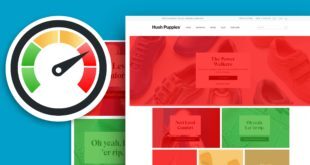Getting visitors to your site is only the first step in a successful SEO campaign. If you want to remain at the top of the search engine results pages (SERPs) and gain a higher PageRank (PR) you need to persuade visitors to stay on your site for as long as possible. In fact, Google even has a specific metric designed to measure the “stickiness” factor of each page, which is basically the page’s ability to hold the attention of users. The logic that Google employs is simple but effective – if users stay at a page for a long period of time before returning to the search results to visit another page, then they must be viewing something useful. Here are 4 on-page optimization tips that will help you keep people on your site longer:
4 On-page optimization tips:
Embed Video and/or Use Infographics
Most visitors do one of the two things when they hit a web page – they start scanning over the written content to find the information they’re looking for, or their attention is grabbed by media content (i.e. – a video or an infographic). When you embed a video on a page be sure to set it to play automatically using the auto-play attribute if possible; this will forcefully grab their attention, and if the video is interesting enough they’ll stick around for at least long enough to finish watching it. This is doubly beneficial if the video is a custom promotional product that is hosted on your YouTube channel, as it provides a direct link to the channel, and therefore encourages your visitors to become subscribers. Infographics are like pictures on steroids – they present information in a visually appealing yet easy to understand manner. If a standard picture speaks a thousand words, an infographic speaks a million.
Split Content into Accurately Labeled Subsections
This is one of the best on-page optimization tips to follow. As mentioned, most visitors will simply want to skim over a page to find the information they’re looking for. If they can’t find it, they’ll simply leave and pick another page that presents the info in a more reader-friendly manner. Use subheaders to split your content into accurately labeled sections so readers can quickly identify which segment of the content they’re interested in. In addition to making your articles easier to scan and increasing page visit times, using subheaders (with H2 tags) that contain commonly-searched-for terms will also add more authority to your keyword-targeting efforts. For pages that are particularly long you may even want to use hashtags to create links at the top of the page that provide convenient access to each section below. This is a method commonly employed on Frequently Asked Questions (FAQ) pages to help readers find the answers they’re looking for without scrolling through the entire page.
Recommend Recent and Related Posts
A related posts sidebar widget displays posts that are related to the content the visitor is currently viewing, encouraging them to further research the topic on your site. Alternatively, you can choose to list the related posts directly below the post, above the comments section — this method is usually more effective at shifting visitors’ attention towards recent posts. Also, be sure to monitor your post comments regularly, because you may find the opportunity to answer a visitor’s question by linking them to another post on the site; doing this lets you interact with your readers, satisfy their query, and post a link to a related post in the comments section. Remember, any time you can point a visitor to another page on your site you are not only increasing page views, you’re also increasing the visit duration – the amount of time it takes for a visitor to return to Google search results and view another site. Neatly categorizing your blog posts into a convenient sidebar blog roll is another great way to divert attention towards other pages on your site.
Interlink Whenever Possible
If you’re using a content management system such as WordPress (and you should be) you can install plugins that will automate the process of easily interlinking your posts to keep people bouncing from page to page on your site. One such plugin is SEO Smart Links, which lets you specify keywords, then searches for those keywords within each post and automatically uses them as anchor text to link to other posts that have relevant tags. With this plugin you can even specify whether you want to allow interlinking in heading tags, and whether you want to link to posts, pages, tags, categories, or all of these page types. However, if you use an automated method like this it is imperative to review the links that are chosen by the plugin to ensure accuracy and true relevancy. Fortunately, there is a WordPress plugin called Broken Link Checker that helps you find and repair all erroneous hyperlinks.
Follow these 4 on-page optimization tips and you will be benefitted hugely.
 Cheapest Linux VPS Home for Cheap Virtual Private Server
Cheapest Linux VPS Home for Cheap Virtual Private Server 

